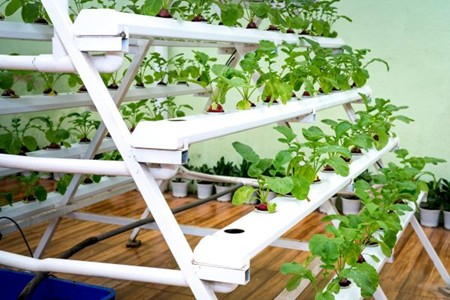Africa’s rapidly shrinking arable land is deepening food insecurity and threatening quality of life. Even in areas where soil remains fertile, the pace of urbanization leaves little room for traditional crop production. Against this backdrop, vertical farming is emerging as a sustainable and immediate solution—growing plants upward rather than outward.
This approach not only conserves space but also supports energy efficiency, biodiversity, and climate resilience. Across the continent, climate change, overgrazing, and overfarming have degraded land, leaving farmers struggling. In Kenya, for instance, 63% of arable land is acidic. Western Kenya farmer Benson Wanjala recalls harvesting 200 bags of maize from his 10-acre farm decades ago—today, that number has dropped to just 30 bags.
While long-term strategies like soil rehabilitation are critical, food insecurity demands urgent solutions. Vertical gardening offers exactly that.
Small-Scale Innovation, Big Impact
In Kajiado County, Kenya, Tuscillah Maoto has turned her one-room rental into a green haven. Using sacks, jerricans, and old tires filled with composted kitchen scraps, she grows onions, pumpkin leaves, amaranth, and African nightshade—native plants that require minimal care. Rainwater harvesting, seasonal river water, and even reused household water sustain her crops year-round.
Elsewhere, communities are adopting shared models. In Nigeria, one neighborhood co-manages three vertical gardens, lowering temperatures, supporting pollination, and ensuring food for families with little farming knowledge.
Benefits Beyond Food
Africa’s diverse climates—from arid deserts to humid savannahs—are vulnerable to rising temperatures and erratic rainfall. Urban centers, already prone to the heat island effect, face additional strain. Vertical gardens help mitigate these challenges by:
Cooling and insulating buildings, reducing reliance on costly electricity.
Filtering air pollutants like sulfur dioxide, nitrogen oxides, and particulate matter.
Supporting biodiversity through pollination by bees, butterflies, and birds.
Sequestering carbon, aiding climate regulation.
Scaling Vertical Solutions
As the practice spreads, farmers are refining methods for planting and irrigation. While not every crop is suitable, shrubs, climbing plants, and native species thrive in vertical systems. Techniques like applying lime or wood ash to acidic soils further boost productivity and resilience.
With Africa’s cities growing by 3.5% annually, and the urban population projected to double to 1.4 billion by 2050, vertical gardens could play a pivotal role in ensuring food security. Community-led initiatives, rather than ambitious but risky mega-projects, are likely to drive the future of urban vegetation.
Even a single square foot of space can host a six-foot tower garden—enough to feed a family. Vertical gardening may not replace traditional farming, but it represents a creative, scalable, and sustainable path forward for Africa’s urban future.
Source: Farmers Review Africa




















































































